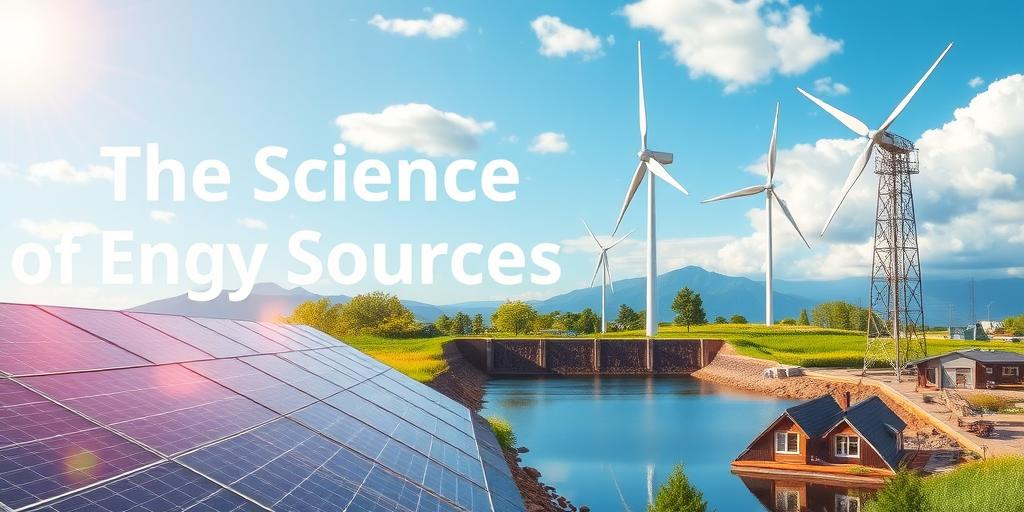Renewable energy sources are rapidly gaining prominence as the world seeks sustainable alternatives to fossil fuels. Understanding the science behind these technologies is crucial for appreciating their potential and limitations. This post delves into the scientific principles governing solar, wind, hydro, geothermal, and biomass energy.
Solar Energy:
- Photovoltaic Effect: Solar panels utilize the photovoltaic effect, where photons from sunlight excite electrons in a semiconductor material (typically silicon), generating an electric current. The efficiency of solar panels depends on factors like the semiconductor material, panel design, and sunlight intensity.
- Solar Thermal: Concentrated solar power (CSP) systems use mirrors or lenses to focus sunlight onto a receiver, heating a fluid (e.g., water or molten salt) to produce steam, which drives a turbine to generate electricity.
Wind Energy:
- Aerodynamics: Wind turbines convert the kinetic energy of wind into electricity. The blades are designed with airfoil shapes, similar to airplane wings, to create lift and rotation when wind flows across them. The amount of energy generated depends on wind speed and blade size.
- Betz Limit: The Betz limit states that a wind turbine can only capture a maximum of 59.3% of the wind's kinetic energy. Modern turbines typically achieve efficiencies of 40-50%.
Hydro Energy:
- Gravitational Potential Energy: Hydropower plants harness the gravitational potential energy of water stored at a height. As water flows downhill through a turbine, it converts potential energy into kinetic energy, which drives a generator to produce electricity.
- Types of Hydropower: Hydropower plants can be classified into large-scale dams, run-of-river systems, and pumped storage hydro. Each type has different environmental and operational characteristics.
Geothermal Energy:
- Earth's Internal Heat: Geothermal energy taps into the Earth's internal heat, which originates from radioactive decay and residual heat from the planet's formation. This heat is used to produce steam, which drives turbines to generate electricity.
- Geothermal Heat Pumps: Geothermal heat pumps utilize the relatively constant temperature of the Earth's shallow subsurface to heat and cool buildings. They transfer heat between the building and the ground, offering energy-efficient climate control.
Biomass Energy:
- Photosynthesis: Biomass energy involves using organic matter from plants and animals as fuel. Plants capture solar energy through photosynthesis, converting carbon dioxide and water into biomass. This biomass can then be burned, gasified, or converted into liquid biofuels.
- Carbon Neutrality: While burning biomass releases carbon dioxide, it is often considered carbon neutral if the biomass is sustainably sourced. This means that the amount of carbon dioxide released is equal to the amount absorbed during plant growth.
Understanding the science behind renewable energy sources is essential for informed decision-making and technological advancements. As research and development continue, these technologies will play an increasingly important role in meeting the world's energy needs while mitigating climate change.









